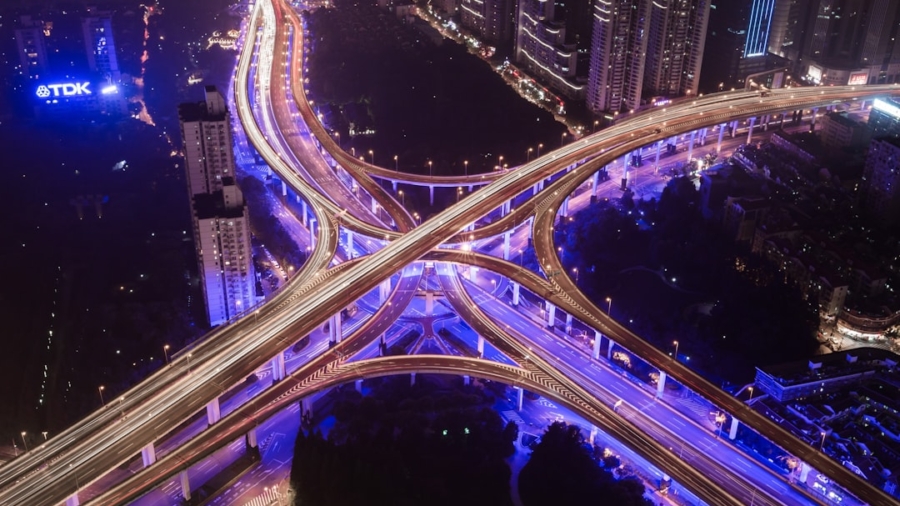The integration of artificial intelligence (AI) into green infrastructure projects represents a transformative shift in how urban environments are designed, constructed, and maintained. Green infrastructure refers to a network of natural and semi-natural systems that provide ecosystem services, such as stormwater management, air quality improvement, and biodiversity enhancement. As cities grapple with the challenges posed by climate change, urbanization, and resource depletion, AI models offer innovative solutions that can optimize these systems for greater efficiency and sustainability.
By leveraging vast amounts of data, AI can analyze complex interactions within ecosystems, predict outcomes, and recommend strategies that enhance the resilience of urban landscapes.
These tools enable planners and engineers to simulate various scenarios, assess the impact of different design choices, and make data-driven decisions.
For instance, AI can help determine the optimal placement of green roofs or permeable pavements to maximize their effectiveness in managing stormwater runoff. As cities increasingly adopt smart technologies, the role of AI in shaping green infrastructure is becoming more pronounced, paving the way for more sustainable urban development.
Key Takeaways
- AI models are increasingly being used in green infrastructure projects to optimize design, construction, and maintenance processes.
- The benefits of AI optimization in green infrastructure include improved efficiency, cost savings, and better environmental outcomes.
- Challenges and limitations of AI in green infrastructure projects include data privacy concerns, technical limitations, and potential biases in decision-making.
- Case studies of successful AI-optimized green infrastructure projects demonstrate the potential for significant improvements in performance and sustainability.
- Ethical and environmental considerations in AI-optimized green infrastructure are important for ensuring that the technology is used responsibly and for the benefit of the environment.
Benefits of AI Optimization in Green Infrastructure
The benefits of AI optimization in green infrastructure projects are manifold, significantly enhancing both environmental outcomes and economic efficiency. One of the primary advantages is the ability to analyze large datasets quickly and accurately. This capability allows for real-time monitoring of environmental conditions, enabling cities to respond proactively to issues such as flooding or air pollution.
For example, AI can process data from sensors placed throughout a city to identify areas at risk of flooding during heavy rainfall. By predicting these events, municipalities can implement timely interventions, such as deploying temporary barriers or adjusting drainage systems to mitigate potential damage. Moreover, AI optimization can lead to cost savings in the long run.
By utilizing predictive analytics, cities can better allocate resources for maintenance and upgrades. For instance, machine learning algorithms can analyze historical data on infrastructure performance to predict when certain components are likely to fail. This foresight allows for targeted maintenance efforts rather than reactive repairs, which can be more costly and disruptive.
Additionally, AI can assist in optimizing the design of green spaces to ensure they provide maximum ecological benefits while minimizing construction and maintenance costs. This dual focus on sustainability and economic viability makes AI an invaluable tool in the realm of green infrastructure.
Challenges and Limitations of AI in Green Infrastructure Projects
Despite the promising potential of AI in green infrastructure projects, several challenges and limitations must be addressed to fully realize its benefits. One significant hurdle is the availability and quality of data. Effective AI models rely on comprehensive datasets that accurately reflect environmental conditions and human activities.
In many cases, cities may lack the necessary data infrastructure or may have incomplete or outdated information. This gap can hinder the development of robust AI models and limit their effectiveness in informing decision-making processes. Another challenge lies in the complexity of ecological systems themselves.
Urban environments are influenced by a multitude of factors, including climate variability, land use changes, and socio-economic dynamics. Developing AI models that can accurately capture these interactions is a daunting task. Furthermore, there is often a lack of transparency in how AI algorithms make decisions, which can lead to skepticism among stakeholders regarding their reliability and fairness.
Ensuring that AI systems are interpretable and accountable is crucial for gaining public trust and fostering collaboration among various stakeholders involved in green infrastructure projects.
Case Studies of Successful AI-Optimized Green Infrastructure Projects
Several case studies illustrate the successful application of AI optimization in green infrastructure projects around the world.
The city employs machine learning algorithms to analyze satellite imagery and assess vegetation health across its parks and gardens.
This data-driven approach allows city planners to identify areas that require maintenance or replanting, ensuring that green spaces remain vibrant and functional. Another compelling case is found in Los Angeles, where AI has been utilized to optimize stormwater management systems. The city implemented a predictive analytics model that analyzes rainfall patterns and runoff data to determine the most effective locations for green infrastructure installations, such as bioswales and rain gardens.
By using this model, Los Angeles has been able to significantly reduce urban flooding while also improving water quality in local waterways. These examples demonstrate how AI can enhance the effectiveness of green infrastructure initiatives by providing actionable insights that lead to better environmental outcomes.
Ethical and Environmental Considerations in AI-Optimized Green Infrastructure
As with any technological advancement, the integration of AI into green infrastructure projects raises important ethical and environmental considerations. One key concern is the potential for bias in AI algorithms, which can lead to inequitable outcomes in urban planning. If data used to train these models reflects existing social inequalities or environmental injustices, the resulting recommendations may inadvertently perpetuate these issues.
It is essential for practitioners to ensure that diverse datasets are utilized and that stakeholder input is incorporated into the development of AI models. Additionally, there are environmental implications associated with the deployment of AI technologies themselves. The energy consumption required for training complex machine learning models can be substantial, raising questions about their overall sustainability.
As cities strive to reduce their carbon footprints through green infrastructure initiatives, it is crucial to consider the environmental impact of the technologies employed in these efforts. Striking a balance between leveraging advanced technologies like AI and maintaining a commitment to sustainability will be vital for the long-term success of green infrastructure projects.
Future Developments and Innovations in AI-Optimized Green Infrastructure
The future of AI-optimized green infrastructure holds exciting possibilities as advancements in technology continue to evolve. One area poised for growth is the integration of Internet of Things (IoT) devices with AI systems. By equipping urban environments with smart sensors that monitor environmental conditions in real-time, cities can gather vast amounts of data that feed into AI models for more accurate predictions and analyses.
This synergy between IoT and AI could lead to more responsive urban ecosystems capable of adapting to changing conditions dynamically. Moreover, advancements in natural language processing (NLP) could facilitate better communication between stakeholders involved in green infrastructure projects. By enabling AI systems to interpret and analyze public feedback or community concerns expressed through social media or surveys, planners can gain valuable insights into public sentiment regarding proposed initiatives.
This enhanced understanding could lead to more inclusive decision-making processes that prioritize community needs while still achieving sustainability goals.
The Role of Government and Policy in Supporting AI-Optimized Green Infrastructure
Government policies play a crucial role in fostering the development and implementation of AI-optimized green infrastructure projects. Policymakers can create an enabling environment by investing in research and development initiatives that focus on integrating AI into urban planning practices. Funding programs that support pilot projects or collaborations between academia, industry, and local governments can accelerate innovation in this field.
Furthermore, establishing regulatory frameworks that promote transparency and accountability in AI applications is essential for building public trust. Governments should encourage best practices for data collection and usage while ensuring that ethical considerations are prioritized throughout the development process. By actively engaging with communities and stakeholders during policy formulation, governments can ensure that AI-driven solutions align with local needs and values.
The Potential Impact of AI Models on the Future of Green Infrastructure
The potential impact of AI models on the future of green infrastructure is profound, offering new avenues for enhancing urban sustainability and resilience. As cities face increasing pressures from climate change and population growth, leveraging advanced technologies like AI will be critical for developing innovative solutions that address these challenges effectively. By optimizing resource allocation, improving decision-making processes, and fostering collaboration among stakeholders, AI has the capacity to transform how we approach urban planning.
However, realizing this potential requires a concerted effort from all sectors—government agencies, private companies, researchers, and communities alike—to navigate the challenges associated with data quality, algorithmic bias, and environmental sustainability. As we move forward into an era where technology plays an increasingly central role in shaping our urban landscapes, it is imperative that we harness the power of AI responsibly and ethically to create greener, more livable cities for future generations.
In a related article, Best Software for Tax Preparers: Streamline Your Workflow and Increase Accuracy, professionals in the tax preparation industry can find tools to optimize their workflow and improve accuracy. Just like AI models are revolutionizing green infrastructure projects, tax preparers can benefit from utilizing the latest software to streamline their processes and enhance their services. By leveraging technology, both industries can achieve greater efficiency and effectiveness in their respective fields.
FAQs
What are AI models for green infrastructure projects?
AI models for green infrastructure projects are advanced technological tools that use artificial intelligence and machine learning algorithms to optimize the design, planning, and implementation of sustainable infrastructure projects such as green buildings, renewable energy systems, and urban green spaces.
How do AI models optimize green infrastructure projects?
AI models optimize green infrastructure projects by analyzing large datasets, identifying patterns, and making predictions to improve the efficiency, sustainability, and cost-effectiveness of the projects. They can help in site selection, energy optimization, material selection, and overall project management.
What are the benefits of using AI models for green infrastructure projects?
The benefits of using AI models for green infrastructure projects include improved environmental sustainability, reduced resource consumption, lower operational costs, enhanced project performance, and accelerated decision-making processes. These models can also help in achieving regulatory compliance and meeting sustainability goals.
What are some examples of AI applications in green infrastructure projects?
Some examples of AI applications in green infrastructure projects include predictive analytics for energy consumption, optimization of water management systems, automated design and planning tools for sustainable buildings, and smart grid technologies for renewable energy integration.
What are the challenges of implementing AI models in green infrastructure projects?
Challenges of implementing AI models in green infrastructure projects include data privacy and security concerns, the need for specialized technical expertise, potential biases in the algorithms, and the initial investment required for technology adoption. Additionally, regulatory and ethical considerations need to be addressed.



